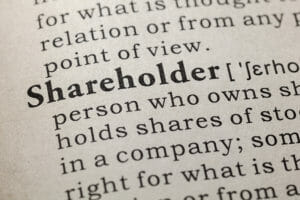
Section 85 Rollovers
Brief Summary
Section 85 of the Income Tax Act (“ITA”) is an important tool in the tax arsenal of corporations. It can be used in many instances to defer taxation for certain transactions, especially complex corporate structures.
Purpose of section 85 rollovers
The main purpose of section 85 rollovers (“rollover”) is to transfer assets on a tax-deferred basis from a taxpayer (transferor) to a Canadian corporation (transferee). A taxpayer can be an individual, a corporation or a trust. You can transfer assets between the taxpayers and corporations on a tax-deferred basis, but this is at the discretion of the taxpayer.
Essentially, a rollover allows a taxpayer to defer all or part of the income, which would otherwise be taxed upon the transfer. It allows an individual or corporation to transfer capital property to a corporation on a tax neutral basis, meaning no tax is paid on the transfer.
The common example of the use of this section is when a taxpayer, who is self-employed (ie sole proprietor), wants to incorporate his or her business and avoid immediate taxation on the transfer of assets from their sole proprietorship to their newly created corporation. This is especially useful for sole proprietorships looking to incorporate, or for transfers between affiliate companies.
Preference shares that are pegged at the aggregate value of the assets are taken back in exchange for the transfer of assets. The individual can then redeem these shares over time; the adjusted cost base (“ACB”) portion of the fixed value preference shares can be removed from the corporation tax free. The value between the ACB and the fair market value (“FMV”), when rolled in, can be redeemed as a deemed dividend.
Important Terminology
Eligible Property – ITA s. 85(1.1)
Eligible property that can be transferred under section 85 are:
• Depreciable capital property (includes eligible capital property)
• Non-depreciable capital property
• Canadian resource properties
• Foreign resource property
• Inventories
• Real estate property owned by a non-resident but used in a business carried on in Canada
Consideration to transferor – ITA s. 85(1)
In return for the transferred property, the corporation (transferee) can provide various types of consideration. The only requirement as per the ITA is that some part of this consideration has to be shares of the corporation.
Non-share consideration (Boot)
If a portion of the consideration paid to the transferor is cash, or new debt of the transferee corporation, this amount is considered the Boot. This amount plays a significant role in the determination of the allowable transfer prices.
Elected Amount
This is the amount that has been elected by both the taxpayer (transferor) and the corporation (transferee) as the transfer price of the property.
Transfer Price and Elected Amount
As mentioned above, the main purpose of the section 85 election is to transfer assets between taxpayers and corporations on a tax-deferred basis. Specific rules govern this transfer price:
General provision and elected amount – ITA s. 85(1)(a)
The general provision stipulates that the elected amount is deemed to be the disposition amount of the property for the transferor and the acquisition cost for the transferee.
Floor Value – ITA s. 85(1)(b)
The floor value of the elected amount cannot be less than the non-share consideration (Boot).
Ceiling Value – ITA 85(1)(c)
The ceiling value cannot be above the FMV of the property.
The floor and ceiling values are the general limits of the elected amount. There are also specific limits based on the type of property that is being transferred.
Inventories and non-depreciable capital property specific limit – ITA s. 85(1)(c.1)
The elected amount cannot be below the lesser of:
• FMV of the property
• Cost amount
Depreciable property specific limit – ITA s. 85(1)(e)
The elected amount cannot be below the lesser of:
• FMV of the property
• Cost amount
• Undepreciated Capital Cost (UCC)
Cost of consideration
When making the transfer, part of the consideration received by the taxpayer (transferor) for the assets transferred has to include shares of the corporation. It can also include non-share consideration, or Boot. The cost of this consideration is as follows:
Non-Share Consideration (Boot) – ITA s. 85(1)(f)
The cost of the Boot received as consideration is the FMV of the property received if it’s one item.
If there are multiple items, then the cost will be the lesser of:
• FMV of the property received
• FMV of the asset received/FMV of all other assets received (Boot)
-Baber Rahim, Tax Law Clerk & JD Candidate
Baber works in our tax department assisting our tax lawyers in preparing Voluntary Disclosure Applications, Taxpayer Relief Applications, and with Appeals, Audits and Objections within the CRA. Baber’s passion for tax law was sparked by an advanced tax law professor at the Goodman School of Business at Brock University, where he received his Bachelor of Accounting (Honours) degree. He subsequently worked for the Canada Revenue Agency (CRA) for several years. After working in the federal public service for a number of years, Baber decided to pursue a career in law and is currently working towards completing his law degree at Western University, while working for Kalfa Law Firm.
© Kalfa Law Firm 2021
The above provides information of a general nature only. This does not constitute legal advice. All transactions or circumstances vary, and specified legal advice is required to meet your particular needs. If you have a legal question you should consult with a lawyer.














